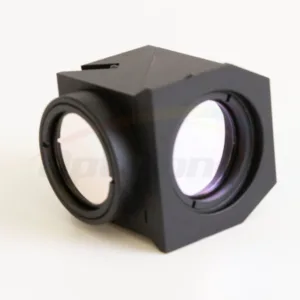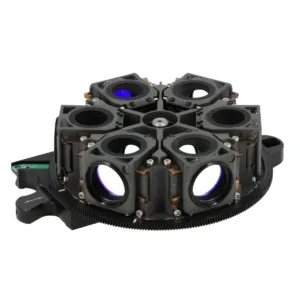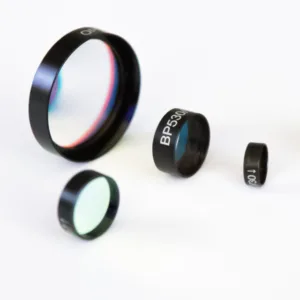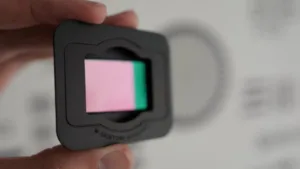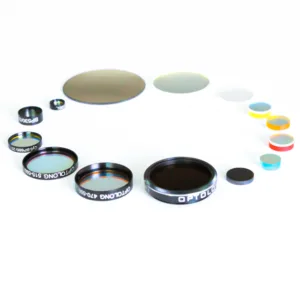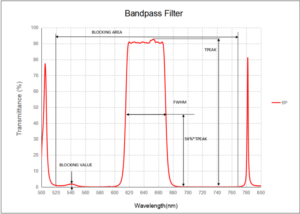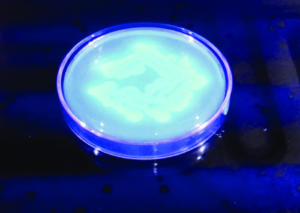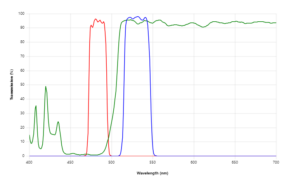-
Fluorescence Excitation And Emission
Fluorescence excitation and emission are like the dazzling stars of the molecular light show. In this friendly exploration, we’ll uncover the magic of how molecules absorb energy, get excited, and then radiate light. These processes play a pivotal role in various scientific fields, from biology to materials science. Think of it as a dance of …
Read More -
Microscope Fluorescence Filters
Microscope fluorescence filters are like a secret ingredient in a recipe, making your science shine. This guide demystifies them, explaining their parts, functions, and selection. Whether you’re a pro or a newbie, these filters brighten your microscopy journey, unveiling the micro-world’s beauty. Components of Microscope Fluorescence Filters Microscope Fluorescence Filters are essential components for vibrant …
Read More -
Fluorescence Filter Cubes: Lean Everything
Fluorescence filter cubes are vital in microscopy, revealing hidden details. These cubes control light wavelengths for clear cell and tissue images. Whether you’re a pro or a beginner, learning about them enriches your microscopy journey. Explore the unseen world! What is a fluorescence filter cube? A fluorescence filter cube is a crucial tool in microscopy …
Read More -
What Is The Purpose Of The Fluorescent Filter Cube Turret?
Introduction A fluorescence filter cube turret is an essential component in fluorescence microscopy, playing a pivotal role in enabling scientists to observe and study fluorescent specimens. It is a practical and user-friendly device that simplifies the process of selecting and switching between various filter sets, ultimately enhancing the quality of fluorescence imaging. What is a …
Read More -
What Is Optical Band Pass Filter & What Are BPS Used For?
Introduction An Optical Band Pass Filter, often called a “color filter” or “spectral filter,” is a nifty device used in optics to allow specific wavelengths of light to pass through while blocking others. Imagine it as sunglasses for light! These filters are essential in various applications, from photography to scientific research. By selectively permitting only …
Read More -
What Is An Optical Low Pass Filter?
Introduction An optical low pass filter (OLPF) is a vital component found in many digital cameras. It plays a crucial role in ensuring the quality of the photos you capture. Think of it as a guardian that protects your images from unwanted visual disturbances, like moiré patterns and aliasing. This filter works by gently blurring …
Read More -
How Does Optical Band Pass Filter Work?
An Optical Band Pass Filter is a powerful device in optics and photonics. It’s like a gatekeeper for light, allowing only a specific range of wavelengths to pass through while blocking others. Imagine it as sunglasses for light! These filters are crucial in various applications, like photography, telecommunications, and scientific research. They help isolate specific …
Read More -
How To Design A Optical Band Pass Filter?
Designing an Optical Band Pass Filter is a fascinating journey into manipulating light. This process involves crafting a filter that allows specific colors to pass through while blocking others. Whether you’re delving into photography or scientific research, this tool offers a creative way to shape light to your advantage. By choosing transparent materials, selecting coatings, …
Read More -
What Fluoresces Under Uv Light?
Have you ever wondered why certain things light up when exposed to UV light? This captivating phenomenon occurs due to the interaction between ultraviolet light and specific materials. When UV light, which carries more energy than visible light, meets these materials, it energizes their atoms. These excited atoms release the excess energy as visible light, …
Read More -
What is an Optical Band Pass Filter Used For?
Introduction In order to let one range of light wavelengths through while obstructing others, an optical band pass filter is a useful tool used in optics and photography. Only the desired colors or wavelengths are able to pass through these filters and reach the camera sensor or detector, acting as somewhat of a gatekeeper for …
Read More



